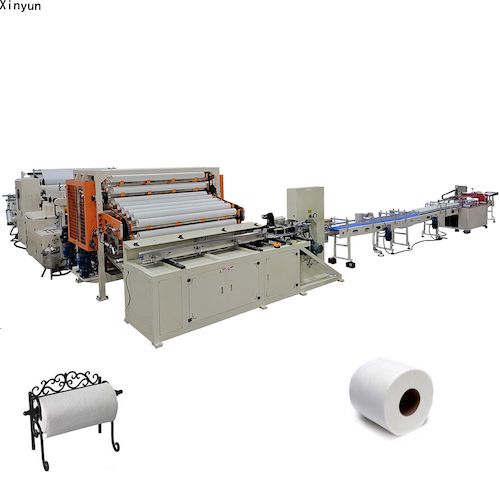Copyright © 2020 Fujian Xinyun Machinery Development Co.,Ltd. All rights reserved. Site Map Powered by iwonder.cn
Toilet paper is an essential household item, and understanding the machinery behind its production offers insight into modern manufacturing processes. A toilet paper machine transforms raw materials into the soft, perforated rolls familiar to consumers. Here's a step-by-step breakdown of how these machines operate:

Virgin Pulp: Wood chips from softwood or hardwood trees are cooked in large digesters with chemicals, breaking down lignin and separating cellulose fibers.
Recycled Pulp: Used paper products are soaked and mechanically agitated to separate fibers. Contaminants like inks and adhesives are removed through screening and cleaning processes.
To achieve the desired whiteness and purity, the pulp undergoes bleaching using environmentally friendly agents such as oxygen, ozone, or hydrogen peroxide. This step enhances the aesthetic appeal and ensures the paper is hygienic.
The bleached pulp is refined to improve fiber bonding, contributing to the paper's strength and softness. Additives may be introduced to enhance specific properties, such as softness or absorbency.
The refined pulp mixture, now called paper stock, is sprayed onto mesh screens. Water drains away, and fibers interweave to form a continuous sheet. This wet sheet is then pressed and dried to remove remaining moisture, resulting in a thin, continuous paper sheet.
The dried paper sheet is wound onto large reels. These reels are then unwound and passed through machines that perforate the paper at regular intervals, facilitating easy tearing.
To enhance texture and absorbency, the paper may undergo embossing. Embossing rollers press patterns into the paper, improving both functionality and aesthetic appeal.
The embossed and perforated paper is rewound onto cardboard cores, forming long "logs" of toilet paper. This process ensures consistent tension and alignment.
The long logs are then cut into individual rolls of the desired width using automated cutting machines. This step ensures uniformity in the final product.
Finally, the individual rolls are packaged for distribution. Depending on the production setup, this can range from simple plastic wrapping to more elaborate packaging solutions.
Understanding this process highlights the precision and technology involved in producing everyday items like toilet paper.
By continuing to use the site you agree to our privacy policy.